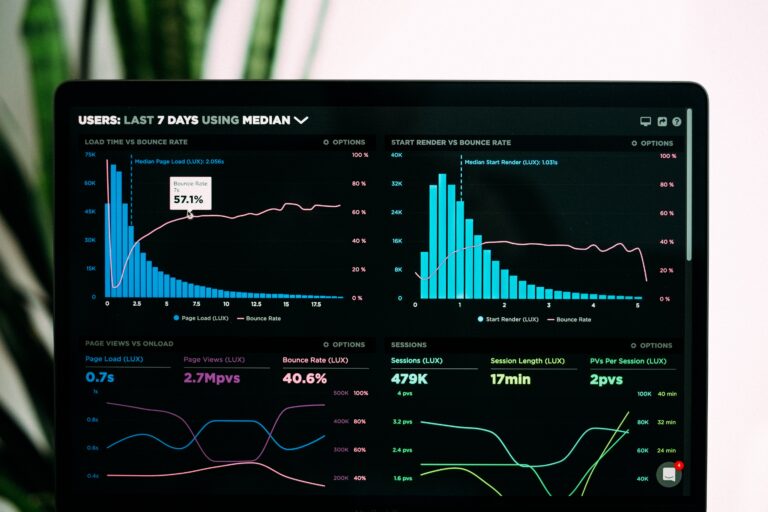Leveraging Metrics for B2B Customer-Led Growth Success

Summary
Leveraging metrics is crucial for B2B customer-led growth success. Metrics provide quantifiable measures that help businesses assess their progress, make data-driven decisions, and align their strategies with customer needs. Key metrics for B2B customer-led growth include customer acquisition cost (CAC), customer lifetime value (CLV), net promoter score (NPS), customer churn rate, customer satisfaction (CSAT), repeat purchase rate, and customer engagement metrics. By setting clear goals, establishing data collection mechanisms, analyzing insights, taking actionable steps, continuously monitoring and adapting, and fostering a data-driven culture, businesses can effectively leverage metrics to drive customer-led growth and achieve sustainable success.
By Karla Sanders, Engagement Manager at Heinz Marketing
In the ever-evolving landscape of B2B business, customer-led growth has emerged as a powerful approach to drive sustainable success. By putting the customer at the center of strategic decisions and initiatives, businesses can create lasting value and foster strong customer relationships. Leveraging metrics plays a vital role in this process, as it provides actionable insights and quantifiable measures to track progress and make informed decisions. In this blog, we will explore the importance of leveraging metrics for B2B customer-led growth and delve into effective strategies to unlock their potential.
Understanding the Significance of Metrics in B2B Customer-Led Growth
Metrics serve as the foundation for informed decision-making in B2B customer-led growth. They provide quantifiable measures that enable businesses to assess their progress, make data-driven decisions, and align their strategies with customer needs. Metrics not only help gauge the effectiveness of customer-centric initiatives but also play a vital role in setting realistic goals and demonstrating the impact of these initiatives to stakeholders.
To truly understand the significance of metrics in B2B customer-led growth, let’s consider an example. Imagine a software-as-a-service (SaaS) company aiming to increase customer retention rates. By analyzing metrics such as customer churn rate and customer satisfaction scores, the company can identify areas for improvement, make targeted changes to their product or service offerings, and deliver a better customer experience. These actions, informed by metrics, can lead to increased customer loyalty and ultimately, sustainable growth.

Key Metrics for B2B Customer-Led Growth
To effectively leverage metrics, businesses must identify and track the right key performance indicators (KPIs) that align with their customer-led growth strategies. Let’s explore some essential metrics for B2B customer-led growth:
Customer Acquisition Cost (CAC)
CAC measures the cost involved in acquiring new customers. By understanding this metric, businesses can optimize their marketing and sales efforts, allocate resources effectively, and enhance customer acquisition strategies.
Customer Lifetime Value (CLV)
CLV quantifies the total value a customer brings to the business throughout their entire relationship. Tracking CLV allows organizations to identify high-value customers, tailor their offerings to meet their specific needs, and develop targeted retention strategies.
Net Promoter Score (NPS)
NPS gauges customer loyalty and advocacy by measuring the likelihood of customers recommending the business to others. A high NPS indicates strong customer relationships and positive word-of-mouth, which can drive organic growth and attract new customers.
Customer Churn Rate
Churn rate measures the rate at which customers discontinue their relationship with the business. By monitoring this metric, organizations can identify factors contributing to customer attrition, take proactive measures to reduce churn and improve customer retention strategies.
Customer Satisfaction (CSAT)
CSAT provides insights into customer satisfaction levels with products, services, or overall experiences. Measuring CSAT helps businesses identify areas of improvement, address customer pain points, and enhance the overall customer journey.
Repeat Purchase Rate
This metric tracks the frequency at which customers make repeat purchases. A high repeat purchase rate indicates customer loyalty and satisfaction, highlighting the success of customer-led strategies and the potential for cross-selling or upselling opportunities.
Customer Engagement Metrics
Metrics such as active usage, time spent on the platform, and customer engagement rate provide insights into customer behavior and their level of engagement with your product or service. Improving these metrics can lead to increased customer retention and advocacy.
Leveraging Metrics to Drive Customer-Led Growth

Once the key metrics have been identified, it’s crucial to leverage them effectively to drive customer-led growth. Let’s explore actionable steps to effectively utilize metrics and drive success:
Define Clear Goals
Start by setting clear and measurable goals that align with your customer-led growth strategy. Identify which metrics are most relevant to your objectives and focus on tracking and improving those metrics.
Establish Data Collection Mechanisms
Implement systems to collect accurate and reliable data for the identified metrics. Utilize customer relationship management (CRM) software, analytics tools, and surveys to gather data that provides valuable insights.
Analyze and Interpret Data
Regularly analyze and interpret the collected data to uncover patterns, trends, and opportunities. Look for correlations between different metrics and customer behavior to gain a holistic understanding of your customers’ needs and preferences.
Take Actionable Insights
Use the insights gained from data analysis to make informed decisions and take targeted actions. For example, if customer satisfaction scores indicate areas for improvement, implement strategies to enhance the customer experience and address pain points.
Continuously Monitor and Adapt
Metrics should be continuously monitored to track progress and identify areas that require adjustment. Regularly review your metrics, assess the effectiveness of your strategies, and adapt them accordingly to stay aligned with evolving customer needs.
Foster a Data-Driven Culture
Encourage a data-driven culture within your organization by promoting the importance of metrics and providing training on data analysis. Ensure that decision-making processes are based on insights derived from metrics rather than assumptions or personal opinions.
Conclusion
Leveraging metrics is essential for B2B customer-led growth success. By understanding the significance of metrics, identifying key metrics aligned with your objectives, and implementing actionable strategies, businesses can transform data into insights that drive informed decisions. Harnessing the power of metrics enables businesses to align their strategies with customer needs, enhance customer experiences, and foster sustainable growth. Embrace the actionable steps discussed in this blog, and let metrics guide your path towards B2B customer-led growth success.




